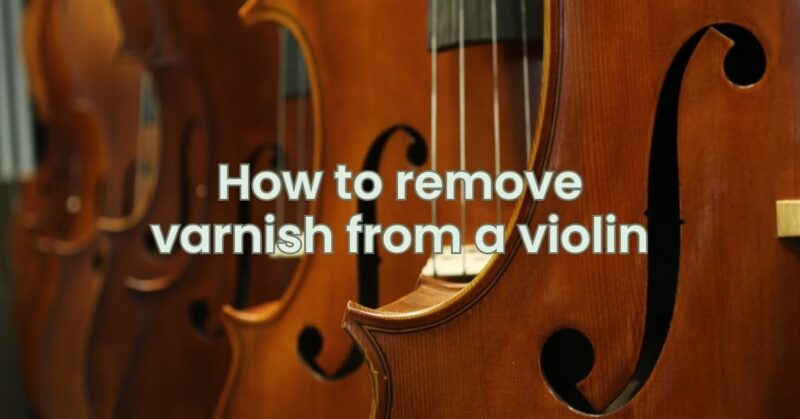Removing varnish from a violin is a complex and delicate process that should only be undertaken with careful consideration and expertise. Varnish plays a crucial role in protecting the wood and influencing the instrument’s sound quality, so removing it requires a deep understanding of the violin’s construction and the potential consequences. In this article, we’ll provide insight into the reasons for removing varnish, the methods involved, and why seeking professional assistance is highly recommended.
Understanding the Importance of Varnish
Varnish serves as a protective layer for the wood of a violin, shielding it from environmental factors, moisture, and wear. Additionally, varnish contributes to the instrument’s appearance and plays a role in shaping its tonal qualities. Removing varnish from a violin should only be considered under specific circumstances, such as restoration or extensive repairs.
Reasons for Removing Varnish
There are a few scenarios in which removing varnish might be necessary:
- Restoration: When restoring an old or damaged violin, removing varnish can reveal hidden details, address structural issues, and replace degraded varnish with new layers.
- Repairing Damage: If the varnish has suffered significant damage or deterioration, removing it might be necessary to repair the underlying wood and apply fresh varnish.
- Analyzing Construction: Violin makers and restorers may remove varnish for analysis, especially when studying historical instruments or learning from the techniques of master makers.
Professional Assistance
Removing varnish from a violin is a highly specialized skill that requires extensive knowledge and experience. It involves using solvents and tools with precision to avoid damaging the wood or compromising the instrument’s structural integrity. For these reasons, seeking the help of a professional luthier or violin restorer is strongly recommended.
Methods for Removing Varnish
Professionals typically use careful techniques when removing varnish:
- Solvents: Certain solvents can soften varnish, making it easier to remove. These solvents require expert application to prevent damage to the wood or distortion of the instrument’s components.
- Scraping: Delicate scraping tools are used to gently remove softened varnish. This requires a skilled hand to avoid damaging the wood.
- Refinishing: After varnish removal, the wood may need refinishing to protect it from moisture and environmental changes. New varnish is applied in multiple layers, taking into consideration both aesthetics and tonal properties.
Caution and Considerations
Removing varnish from a violin is irreversible, and mistakes can result in permanent damage. Here are a few important considerations:
- Loss of Originality: Removing varnish can impact the instrument’s historical value and originality. This should be carefully weighed against the benefits of restoration.
- Sound Quality: Varnish influences the violin’s sound. Changing or removing varnish can alter the instrument’s tonal characteristics.
- Professional Expertise: Attempting varnish removal without the proper expertise can lead to irreparable damage to the violin.
Conclusion
Removing varnish from a violin is a specialized process that requires extensive knowledge, experience, and a deep understanding of the instrument’s construction and historical context. If you’re considering removing varnish from your violin, consult with a professional luthier or violin restorer who can guide you through the process and make informed decisions that preserve the instrument’s value, integrity, and unique qualities.


